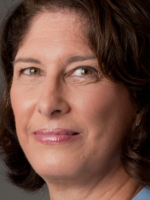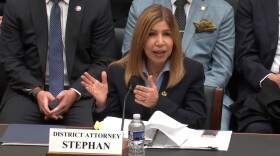It's an odd-numbered year, but there's a national political campaign going on: More than $100 million has been spent this year on television advertising for and against a health care overhaul.
There are dozens of pro and con ads. Turn on the TV, and you'd think someone named "health care" was running for office. The ubiquitous salesman in chief for health care legislation is in one of them running this week on national cable television.
"We will place a limit on how much you can be charged for out-of-pocket expenses — because no one in America should go broke just because they get sick," President Obama says in one ad. It is paid for by a coalition of groups supporting a health care overhaul.
Another ad, paid for by the conservative group League of American Voters, is against the overhaul: "How can Obama's plan cover 50 million new patients without any new doctors? It can't. It will hurt our seniors and Medicare as we know it; ration coverage and care," a doctor who narrates the ad tells viewers.
'Harry And Louise' Ads
In some ways, this is reminiscent of what happened 16 years ago — the last time Washington, D.C., was in the throes of a major debate about overhauling the nation's health system.
But Ken Goldstein, who tracks political advertising at the University of Wisconsin, says in 2009, something very different is going on.
"There's certainly been massive amounts of television advertising this time around," Goldstein says. "But I think the real story is the dogs that aren't barking. So, the last time around, you had the Harry and Louise ads [on Clinton's health plan], you had an enormous amount of expenditures from the pharmaceutical companies. This year the big story is the $100 million, $150 million ads that the pharmaceutical companies are not running."
There's certainly been massive amounts of television advertising this time around. But I think the real story is the dogs that aren't barking.
The pharmaceutical companies are not running ads against health care legislation this time around — but they are running ads.
And it might surprise you that the ads Big Pharma is paying for are in favor of a health care overhaul.
One of them even stars the nemeses of the Clintons' health care plan: Harry and Louise.
Since 1993, the fictional suburban husband and wife appear to have changed their minds.
"Well, it looks like we may finally get health care reform," Harry says.
"It's about time, 'cause every day more and more people are finding they can't afford health care," Louise replies.
Seeing 'Mutual Interest' In An Overhaul
This plain vanilla ad in favor of health care legislation is the result of a deal the White House struck earlier this year with the pharmaceutical industry. The drug makers agreed to support the broad outlines of a health care bill, and the administration agreed to limit the amount of fees and budget cuts drug makers would have to face.
"At a time when it seemed as if Obama had enormous momentum, it became in the interest of those groups to want to get on board," says Howard Paster, who was President Clinton's chief congressional liaison.
"And so it was of mutual interest for the groups to do their deals early," he adds.
After the deal was struck, the drug makers set aside $150 million to advertise in favor of a health care overhaul.
"I think people are keeping their ends of the bargains, which is as it should be," Paster says. "It will be interesting to see, when this is finished, if TV advertising is as pivotal as it was 16 years ago. We all remember Harry and Louise and the degree to which that changed the landscape of advocacy advertising. Now the market is so flooded, it's like a political campaign where every candidate has too much money. And the question is: What's coming through the clutter?"
Maybe not much, says University of Wisconsin's Goldstein.
"I think it's pretty safe to say that you typically only see massive advertising effects when you have one side with a massive advantage in resources, a massive one-sided flow of information, and a massive advantage in the message they're trying to get over," Goldstein says. "The Obama presidential campaign in 2008 is a pretty good example of that. In the health care battle, the resources are pretty equal."
According to Campaign Media Analysis Group, about $47 million has been spent on advertising in favor of a health care overhaul; $32 million has gone to oppose it.
And an NPR Kaiser poll found that 56 percent of Americans say they've seen or heard those ads. Roughly equal numbers say they have seen ads in favor of health care legislation and against it.
And that suggests that this year, both sides have fought each other to a draw — at least on the airwaves.
Copyright 2022 NPR. To see more, visit https://www.npr.org. 9(MDAzMjM2NDYzMDEyMzc1Njk5NjAxNzY3OQ001))






